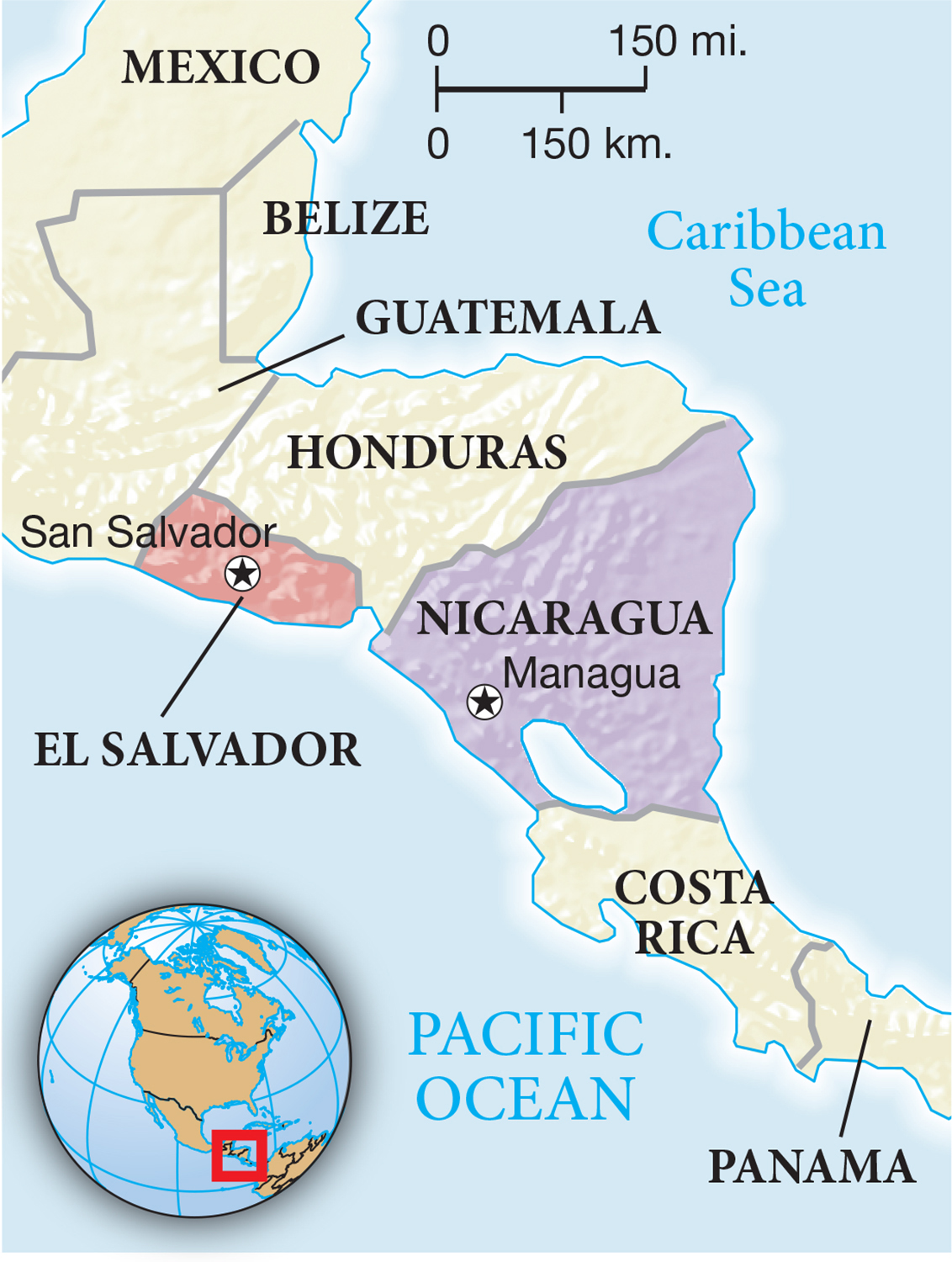Militarization and Interventions Abroad
Reagan expanded the military with new bombers and missiles, an enhanced nuclear force in Europe, a larger navy, and a rapid-
Reagan startled many of his own advisers in March 1983 by announcing plans for research on the Strategic Defense Initiative (SDI). Immediately dubbed “Star Wars” by critics who doubted its feasibility, the project would deploy lasers in space to destroy enemy missiles before they could reach their targets. Such a defense would allow the United States to strike first and not fear retaliation. The Soviets reacted angrily because SDI violated the 1972 Antiballistic Missile Treaty and because they would have to make huge investments to develop their own Star Wars technology to maintain the nuclear balance. Subsequent administrations continued to spend billions on SDI research without producing a working system.
Reagan justified the military buildup and SDI as a means to negotiate with the Soviets from a position of strength, but he provoked an outburst of pleas to halt the arms race. In 1982, a rally demanding a freeze on additional nuclear weapons drew 700,000 people in New York City. That same year the National Conference of Catholic Bishops issued a strong call for nuclear disarmament. Hundreds of thousands demonstrated across Europe, stimulated by fears of new U.S. missiles scheduled for deployment there in 1983.

The U.S. military buildup was powerless before the growing threat of terrorism by nonstate organizations seeking to gain political objectives by attacking civilian populations. Terrorism had a long history throughout the world, but in the 1970s and 1980s Americans saw it escalate among groups hostile to Israel and Western policies. In 1972, for example, after the Israeli occupation of the West Bank, Palestinian terrorists murdered eleven Israeli athletes at the Munich Olympics. The terrorist organization Hezbollah, composed of Shiite Muslims and backed by Iran and Syria, arose in Lebanon in 1982 after Israeli forces invaded that country to stop the Palestine Liberation Organization from using sanctuaries in Lebanon to launch attacks on Israel.
Reagan’s effort to stabilize Lebanon by sending 2,000 Marines to join an international peacekeeping mission failed. In April 1983, a suicide attack on the U.S. Embassy in Beirut killed 63 people, and in October a Hezbollah fighter drove a bomb-

Following a Cold War pattern begun under Eisenhower, the Reagan administration sought to contain leftist movements across the globe. In October 1983, 5,000 U.S. troops invaded Grenada, a small Caribbean nation where Marxists had staged a successful coup. In Asia, the United States quietly aided the Afghan rebels’ war against Afghanistan’s Soviet-
Administration officials were most fearful of left-